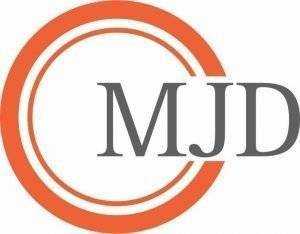South African residential property prices are experiencing continued downward pressure while the average cost of building new property continues to increase year on year with rising costs of materials and labour. The 2018/ 2019 Lightstone Property Forecast showed that the market ended close to 2.9% as opposed to the forecasted 3.8% in 2018. The current market value growth is ranging from 2% to 5% nationally, while the high and luxury wealth segments are growing at below 4%.
It is fast becoming clear that the gap between the value of your home and the cost to rebuild is ever widening – this is the single biggest culprit when it comes to insuring your home for the wrong value. As such, homeowners who insure their property at market value are increasingly putting themselves at risk of being severely underinsured.
This is according to Christelle Colman, Managing Director of Elite Risk Acceptances, who says that insuring a property at market value, as opposed to replacement value, is one of the most common mistakes she sees South African homeowners make.
“When you purchase building insurance, it is important to remember that you are covered for everything except the land. The amount you insure for will therefore be the replacement value of the structure, including outbuildings, and not the market value of the property as a whole. So while the market value of property may have declined, the cost of re-building the property becomes costlier each year.
“As a result, home insurance policies should not be calculated on what the property is currently worth on the market, but rather on what it would cost to rebuild the property today, this should include all professional fees required to rebuild the property,” she explains.
Colman says that this is particularly relevant for high-net-worth individuals, as many ultra-high-end South African properties are situated in difficult-to-reach locations, such as Bakoven in Cape Town. “This will understandably play a role in insurance premiums, because in the event of a total loss, it may be impossible for some trucks to reach a property situated there to remove rubble.
“In this case, it would be necessary to contract rock climbers to remove all rubble by hand. This is clearly an expensive and time-consuming exercise, which is unlikely to be funded by a mass market insurance policy,” she explains.
Similarly, Colman advises affluent homeowners that their luxurious finishes will likely require more attention when being replaced. “Expensive Italian floor tiles or imported wallpaper hold a great deal of value and should be replaced with material of a similar standard. For this reason, factors such as the impact of the rand to dollar exchange rate must also be factored into the cost of rebuilding.”
“If the policy is not with a specialist insurer who understands and caters for this niche, there is a likelihood that the homeowner will be left dissatisfied with any repairs that are done,” she says.
On the other end of the spectrum, Colman points out that a property’s desirable location could also result in a homeowner being over-insured if they base their insurance on market-value. “Simply put, a home perched on the shores of Cape Town’s desirable Atlantic Seaboard will have a market value considerably more than one that is located in an inland suburb with no tourist appeal – even if the two properties are identical in every other aspect.”
Additionally, home improvements that would typically raise the market value of a property, may actually result in lower insurance premiums, she adds. “Installing additional security measures such as an alarm, electric fence or smoke detectors, for example, could ensure you get a discounted rate on your home insurance. As such, it is important to reassess your home insurance after renovations of this nature.”
These, Colman says, are just some examples of the major financial mistakes that affluent homeowners typically make when insuring their properties – either through insuring their home at market value without taking into account the specifications of their home, or when sourcing a policy from an insurer unequipped to deal with their needs. “As such, it is essential that this category of homeowner choose specialist underwriters and brokers who are able to effectively service their complex needs.”
Colman’s top tips to consider when insuring your home are:
- Insure for rebuilding costs including professional fees and not the market value of your home
- Obtain a professional valuation via your insurer, a builder or quantity surveyor
- Ensure that the sum insured is reevaluated and if necessary, increased each year to cater for the risk related to building costs
- Don’t forget to include items such as paving, outside living areas and swimming pools as well as all outbuildings
- Remember to consider items such as imported tiles and heritage buildings when calculating the cost of replacement.
By: Christelle Colman, Elite Risk Acceptances
